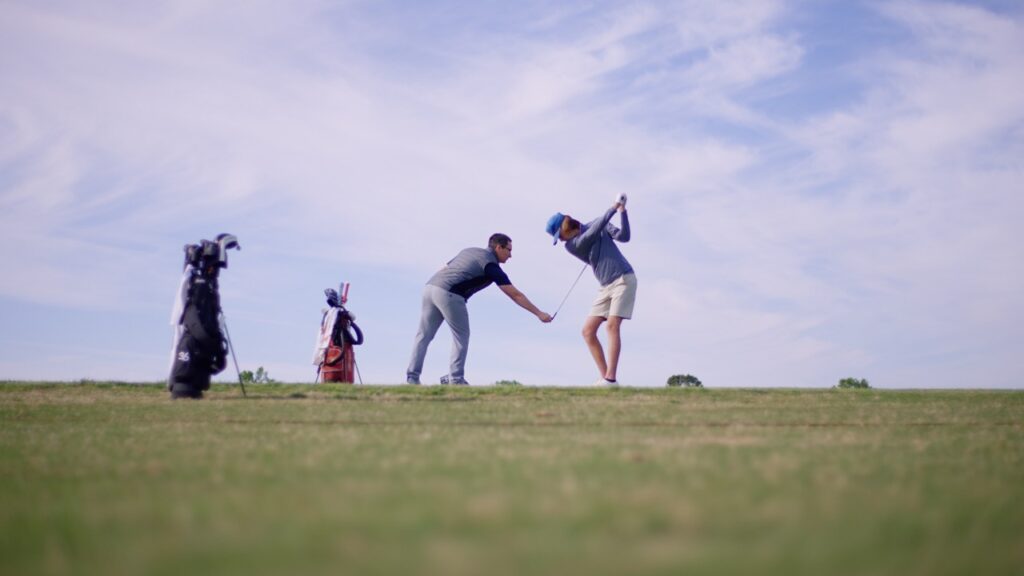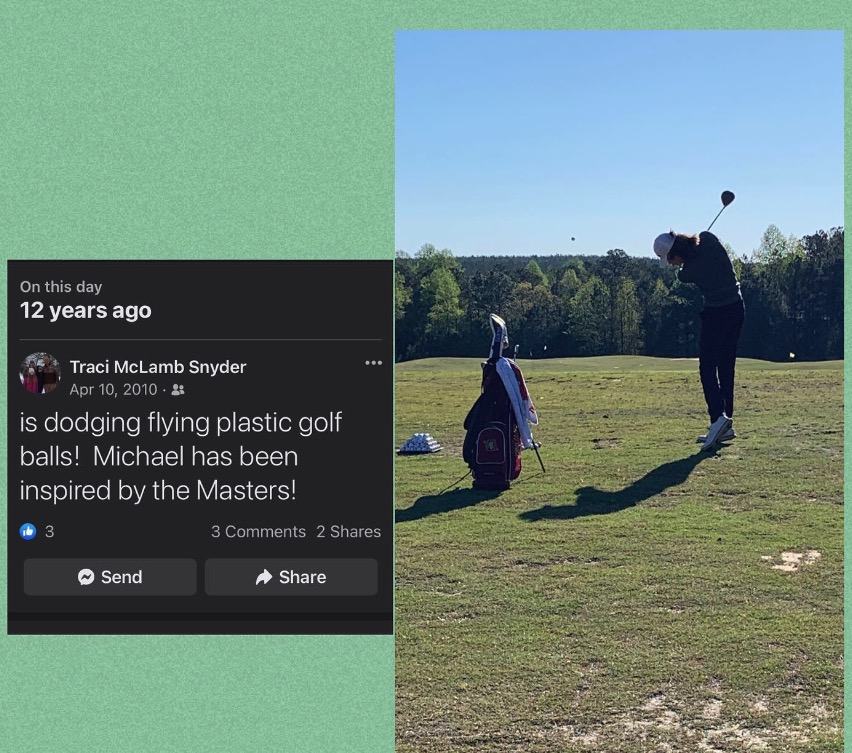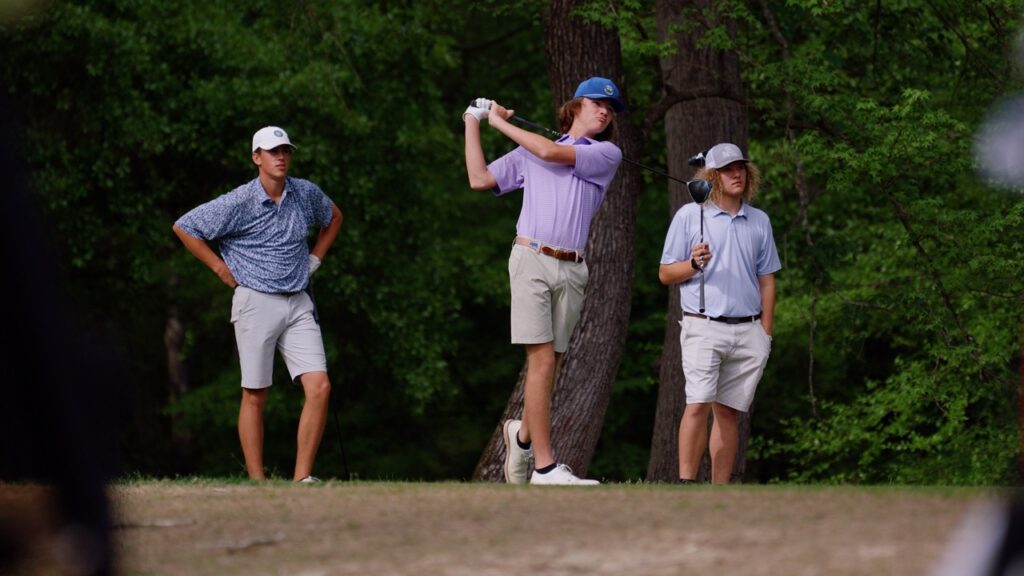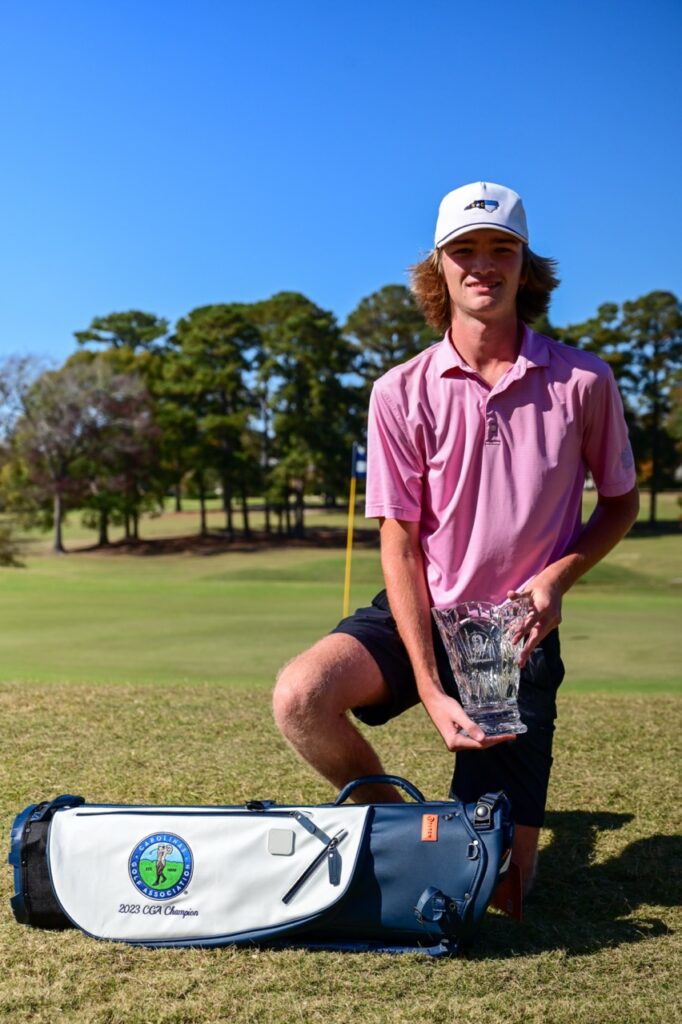
In this stage, the student shows signs of wanting to know more details about what they are doing and how to improve. They have developed enough in a given activity that they are ready for “What’s next?”
It’s at this stage that Michael graduated from Operation 36 by beating 36 from Level 10. His focus turned to playing in more junior tournaments and events. He shared that he had a goal of wanting to play golf at the highest level in college, Division I.
The focus of his training went from attending Academy Classes with his peers and playing in 9-hole Op 36 events at his home course to more private lessons and traveling to play in junior events around the state. We communicated to him that to have the best opportunity to play at the Division I level in college, he needed to show signs of shooting under par by the 10th grade or Sophomore year of High School.

Each January from the age of 13 to the present day, I meet with his family at the dinner table at their house to evaluate how the previous year went and to plan for the next year. I shared with them early on that to give him the best chance to play in college, he needs to play in 15-20 junior events each year. That is not only a financial commitment, but also a travel commitment that they didn’t incur when they did Operation 36 at their local course. Michael had a tremendous support system with his parents and grandparents tag-teaming the travel over the years. Without them, his goal of playing college golf would not have been possible.

This is a team effort and should be a team effort for every family that chooses to do something similar to this.
What did his training schedule look like at this stage?
From the age of 13-16, we would do weekly private lessons. He played in about 2-3 junior tournaments a month when he was in-season, so we didn’t have the liberty to make drastic changes to his technique in each session. We slowly chipped away at a few things so he could still have confidence and could shoot low scores.

During his off-season, we would spend hours upon hours in an indoor facility and on the range when the weather was good to make the improvements to his game that were necessary for him to compete at the highest level. Was it easy? No, and Michael would be the first to tell you!
When did it click for him?
Michael slowly moved his way up the rankings in the state to a top 100 player when he was 12, 13, and 14. As with all players, he would have a good event followed by a few events where he didn’t score as well as he would have liked. Some players at this stage start saying, “Maybe I just can’t do this.” Not Michael, he kept plugging away and wanting to improve.
At the beginning of 2022, he started to show signs of developing a swing pattern that was very repeatable. Some of the pieces of his swing he had been diligently working on over the last few years started to become a habit he could count on. He started hitting 10+ greens on a routine basis and had a few great rounds where he hit 12+ greens.
He also started to grow which also helped him to increase his distance. Instead of hitting fairway woods into par 4s, he was hitting 7, 8, and 9 irons. In late 2022, he shot rounds of 66-67-69 and 65 on full-length courses in tournaments. He came within 1 shot of qualifying for the USGA US Junior Amateur at Bandon Dunes. Those scores got the attention of some colleges and he started to receive some communication from them.
In 2023, he kept up his momentum from the previous year and moved into the top 50 in the state. As a coach, we kept hammering away in private lessons on making his swing pattern more and more consistent. “Coach, are we going to keep working on the same thing we did the last few years? We’ve done the same thing on my swing for quite a while.” Yes, we are about 80% where you need to be. It’s working, you are improving, we will stay the course.

At a 3-day event in October of 2023, he separated himself from the field and won by 7 strokes. He shot rounds of 64-67-66 and was fortunate enough to beat some strong players. He received a call from an ACC school and the head coach attended our next lesson to watch him. The following day he was offered a scholarship to play golf at NC State University and he accepted. It was a great day for Michael and his family. It was a lot of fun for me, what a fun ride it has been.
In part 3, we will explore what happens to a player who has graduated from the Operation 36 program, had success in junior golf, and will be playing Division I golf in the future. We will also explore the top 5 things we can learn from Michael’s story to apply to our own child’s journey. Click the image below to read Part 3.